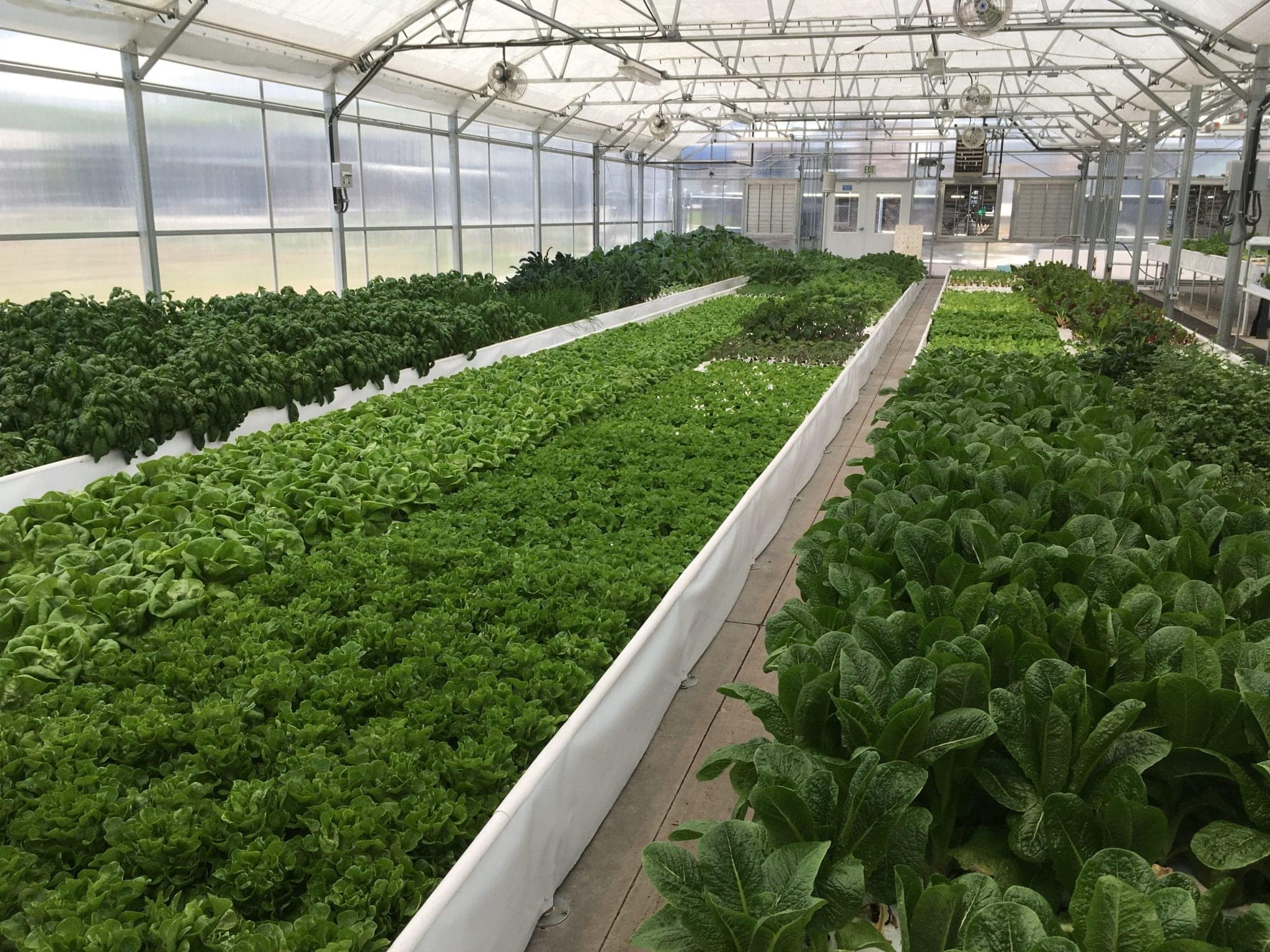Backyard aquaponics is a type of gardening that combines hydroponics and fish farming to create a self-sustaining ecosystem in your own backyard. This guide will provide an introduction to backyard aquaponics, explain how it works, and give you tips on how to set up your own backyard aquaponics system.
What is backyard aquaponics?
Backyard aquaponics is a sustainable gardening method that combines hydroponics and fish farming. Hydroponics is a method of growing plants without soil, while fish farming is the practice of raising fish in tanks or ponds. In backyard aquaponics, plants and fish are grown together in a closed-loop system. The fish waste provides nutrients for the plants, while the plants help to filter the water that the fish live in. This creates a self-sustaining ecosystem where both the plants and fish thrive.
How does backyard aquaponics work?
Backyard aquaponics works by using the waste produced by fish to fertilize plants. Fish produce ammonia as a waste product, which can be toxic to them if it builds up in their tank or pond. In a backyard aquaponics system, this ammonia is converted into nitrates by beneficial bacteria that live in the system. Nitrates are a form of nitrogen that plants can absorb and use as a nutrient. As the plants take up these nutrients, they help to filter the water in which the fish live, removing harmful toxins and improving water quality.
There are two main types of backyard aquaponics systems: media-based systems and nutrient film technique (NFT) systems.
Media-based systems use a growing medium, such as gravel or clay pellets, to support the plants. The water from the fish tank is pumped into the growing medium, where it is filtered by the plants before returning to the fish tank. This type of system is easy to set up and maintain and can be used to grow a wide variety of plants.
NFT systems, on the other hand, use a thin film of water to deliver nutrients to the plants. In an NFT system, the water from the fish tank is pumped into a trough or tube, where it flows over the roots of the plants before returning to the fish tank. This type of system is more efficient than media-based systems, as it uses less water and nutrients, but it can be more difficult to set up and maintain.
What do you need to set up a backyard aquaponics system?
To set up a backyard aquaponics system, you will need a few basic components:
- Fish tank or pond: This is where you will raise your fish. The size of your fish tank will depend on the number and size of fish you plan to raise.
- Grow bed or trough: This is where you will grow your plants. The size of your grow bed will depend on the size of your fish tank and the number of plants you plan to grow.
- Pump: A pump is used to circulate water from the fish tank to the grow bed and back again.
- Plumbing: You will need plumbing to connect your fish tank, grow bed, and pump.
- Growing medium: If you are using a media-based system, you will need a growing medium, such as gravel or clay pellets, to support your plants.
- Fish: You will need fish to produce the waste that will fertilize your plants. There are many different types of fish that can be used in aquaponics, including tilapia, trout, and catfish.
- Plants: You can grow a wide variety of plants in aquaponics, including lettuce, herbs, tomatoes, and peppers.
- Test kits: You will need test kits to monitor the levels of ammonia, nitrites, and nitrates in your system.
Now that you know the basic components you need to set up a backyard aquaponics system, here are some tips to help you get started:
- Start small: It’s best to start with a small system and work your way up as you gain experience. A small system will be easier to manage and will help you avoid costly mistakes.
- Choose the right location: Your aquaponics system should be located in a place that receives plenty of sunlight, but also provides some shade during the hottest part of the day. You’ll also want to choose a location that is protected from strong winds and predators.
- Consider the climate: The plants and fish in your aquaponics system will have specific temperature requirements, so it’s important to choose plants and fish that are appropriate for your climate.
- Monitor your water quality: You’ll need to monitor the levels of ammonia, nitrites, and nitrates in your system to make sure they stay within safe limits for your fish and plants.
- Choose the right fish: Different types of fish have different requirements, so it’s important to choose fish that are appropriate for your system. Some fish, like tilapia, are hardy and easy to care for, while others, like trout, require cooler water temperatures and more specialized care.
- Choose the right plants: Some plants are better suited for aquaponics than others. Lettuce, herbs, and leafy greens are all good choices for aquaponics, while plants that require a lot of nutrients or that produce large fruit may not be as well-suited.
- Don’t overfeed your fish: Overfeeding your fish can lead to a buildup of ammonia and nitrites in your system, which can be harmful to your fish and plants. Feed your fish only what they can eat in a few minutes, and be sure to remove any uneaten food.
- Be patient: It takes time for an aquaponics system to reach a state of balance, so be patient and don’t expect immediate results. It may take several months for your system to fully mature and produce a bountiful harvest.
Benefits of backyard aquaponics
There are many benefits to backyard aquaponics. Here are just a few:
- Sustainability: Aquaponics is a sustainable method of gardening that uses less water and produces less waste than traditional gardening methods.
- Fresh, healthy food: Aquaponics allows you to grow fresh, healthy produce right in your own backyard.
- Reduced food miles: By growing your own food, you can reduce the distance it travels from farm to table, reducing the carbon footprint of your food.
- Educational: Backyard aquaponics is a great way to teach children about sustainable gardening and the importance of taking care of the environment.
- Fun: Aquaponics is a fun and rewarding hobby that can provide hours of entertainment and enjoyment.
In conclusion, backyard aquaponics is a sustainable and rewarding method of gardening that combines hydroponics and fish farming to create a self-sustaining ecosystem in your own backyard. With a little bit of planning and effort, you can set up your own backyard aquaponics system and enjoy fresh, healthy produce year-round.
Ready to live off the land and become a self-sufficient homesteader? Look no further than The Self-Sufficient Backyard! This comprehensive guide provides everything you need to know to turn your backyard into a thriving, independent homestead. From growing your own food to raising livestock, this book is your ultimate resource for achieving self-sufficiency. Click HERE to check it out today and start living the self-sufficient lifestyle you’ve always dreamed of!
here are some popular products for backyard aquaponics systems with links to online retailers:
- Fish tank – Rubbermaid Commercial Products Structural Foam Stock Tank (Amazon Link: https://www.amazon.com/dp/B07TYC7RF2)
- Grow bed – Aquaponics USA Food-Grade Polyethylene Grow Bed (Aquaponics USA Link: https://www.aquaponicsusa.com/collections/aquaponic-grow-beds)
- Water pump – EcoPlus 1056 GPH Submersible Water Pump (Amazon Link: https://www.amazon.com/dp/B00JVTU7L0)
- Air pump – Tetra Whisper Air Pump for Aquariums (Amazon Link: https://www.amazon.com/dp/B0009YJ4N6)
- Aeration stones – Pawfly Air Stone Bubble for Aquarium Fish Tank (Amazon Link: https://www.amazon.com/dp/B07917GNJH)
- Grow lights – VIPARSPECTRA UL Certified 600W LED Grow Light (Amazon Link: https://www.amazon.com/dp/B01B4GQ6MO)
- Fish food – TetraPond Floating Koi Sticks (Amazon Link: https://www.amazon.com/dp/B000HHLQ10)
- Water test kit – API Freshwater Master Test Kit (Amazon Link: https://www.amazon.com/dp/B000255NCI)
- pH meter – Apera Instruments AI209 Value pH Tester Kit (Amazon Link: https://www.amazon.com/dp/B01ENFOIQE)
- Fish net – Tetra Pond Pond & Aquarium Net (Amazon Link: https://www.amazon.com/dp/B00025Z6V0)
here are some websites where you can purchase aquaponics equipment:
- Aquaponics USA (https://www.aquaponicsusa.com/) – Aquaponics USA offers a variety of aquaponics equipment, including grow beds, fish tanks, water pumps, and aeration systems.
- The Aquaponic Source (https://www.theaquaponicsource.com/) – The Aquaponic Source offers aquaponics kits, equipment, and supplies for both beginners and experienced aquaponic gardeners.
- Amazon (https://www.amazon.com/) – Amazon offers a wide variety of aquaponics equipment from different brands, including grow beds, water pumps, air pumps, and fish tanks.
- Home Depot (https://www.homedepot.com/) – Home Depot offers a range of aquaponics equipment, including grow beds, water pumps, and tubing.
- Lowe’s (https://www.lowes.com/) – Lowe’s carries a selection of aquaponics equipment, including fish tanks, grow beds, and water pumps.
- Petco (https://www.petco.com/) – Petco offers a variety of aquaponics equipment, including air pumps, aeration stones, fish nets, and fish food.
- PetSmart (https://www.petsmart.com/) – PetSmart carries a selection of aquaponics equipment, including air pumps, aeration stones, fish food, and water test kits.





